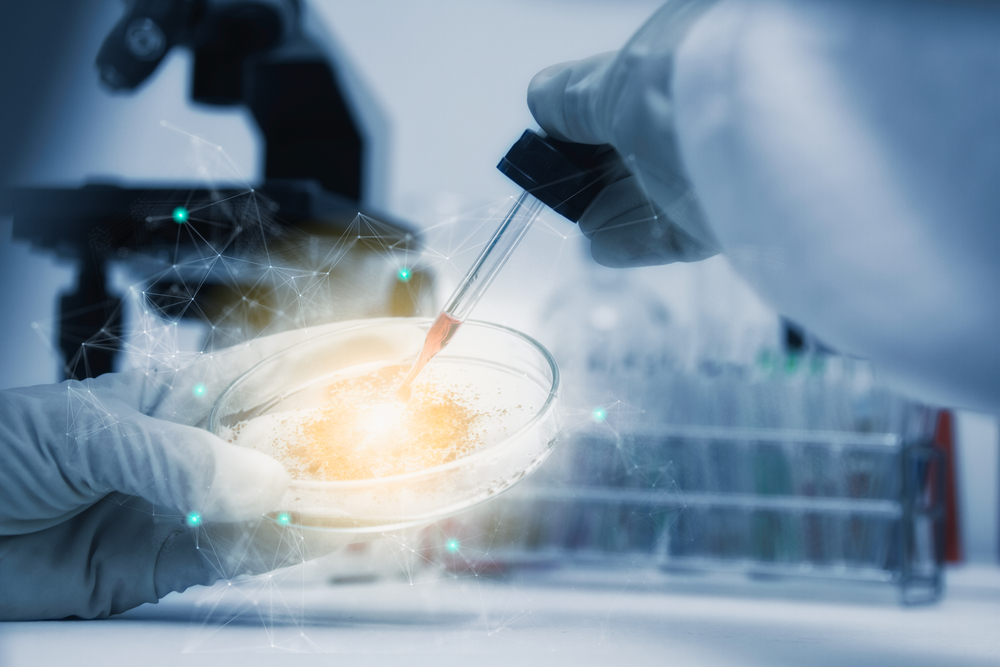Novel Mouse Model of Pompe Shows Potential of New Gene Therapy

Scientists have created a new mouse model of Pompe disease that displays the severe respiratory impairments experienced by many patients but were never observed in other animal models of the disorder.
Using this more stringent model, investigators also demonstrated the therapeutic potential of a new form of gene therapy that uses a modified version of acid alpha-glucosidase (GAA), the enzyme missing in patients with Pompe, to improve respiratory function and survival.
These findings were described in the study, “Gene therapy with secreted acid alpha-glucosidase rescues Pompe disease in a novel mouse model with early-onset spinal cord and respiratory defects,” published in the journal EBioMedicine.
Pompe disease is characterized by the excessive accumulation of glycogen (a sugar molecule) inside cells due to the lack of GAA. This buildup of glycogen occurs mostly in muscle cells, including those in the heart and other organs, and for this reason people with Pompe tend to develop progressive muscle weakness, heart disease, and respiratory problems.
Mice genetically engineered to be unable to produce GAA, known as Gaa knock-out (KO) mice, are the most widely used animal model of Pompe. However, these animals usually do not show any of the typical respiratory issues experienced by many patients with Pompe.
In this study, researchers in France described how they created and validated a new mouse model of Pompe that displays the same respiratory impairments often seen in patients.
To create the model, they bred Gaa KO mice with DBA2/J animals — a strain particularly susceptible to certain health conditions such as seizures, and hearing and vision problems. They then performed a complete characterization of the animals using mostly male mice, as previous research demonstrated that female Gaa KO mice tend to have milder symptoms.
The investigators found the new animals (Gaa KODBA2/J mice) had developed many of the key symptoms often seen in patients, including muscle weakness, heart enlargement, severe respiratory impairments, and premature death.
These features were accompanied by alterations in the transcriptome of their muscle cells and spinal cord. The transcriptome is the group of all RNA molecules, or transcripts, produced from active genes in cells of tissues. These transcripts are the molecules that cells use as templates to produce proteins.
To assess if restoring GAA activity would correct the abnormal genetic signature in the spinal cord and muscle cells, the scientists treated newborn animals with a new form of gene therapy and re-assessed them four months later.
This new gene therapy is based on a technology licensed to Spark Therapeutics and uses a harmless adeno-associated virus (AAV) vector to deliver a modified version of GAA to cells.
Four months after treating animals with the new therapy, the investigators found that 90.5% of genes that had an abnormal activity in muscle cells were either partially or fully normalized. This percentage was slightly lower (62.5%) in the genes with abnormal activity in the spinal cord.
Levels of glycogen in muscle cells and in the spinal cord also returned to normal within this period of time.
The researchers then administered the therapy to adult mice (2 months old) to assess if restoring GAA activity might ease muscle and respiratory impairments.
In this case, when they re-evaluated animals three months later, the scientists found improvements in both respiratory and muscle function, as well as extended survival. As seen in the newborn animals, treatment also normalized glycogen levels in the spinal cord, brain, and muscle cells of the adults.
“In conclusion, this work provides a unique, highly stringent mouse model of PD [Pompe disease], which offers insights into mechanisms and biomarkers of PD, and demonstrates novel proof-of-concept of the efficacy of systemic AAV vector gene transfer in addressing the neuromuscular pathology [disease features] in PD,” the investigators wrote.
Two study authors are listed as inventors in the patent application describing this new gene therapy that has been licensed to Spark Therapeutics, and one of them is currently an employee of the company. This study was partially funded by Spark.






